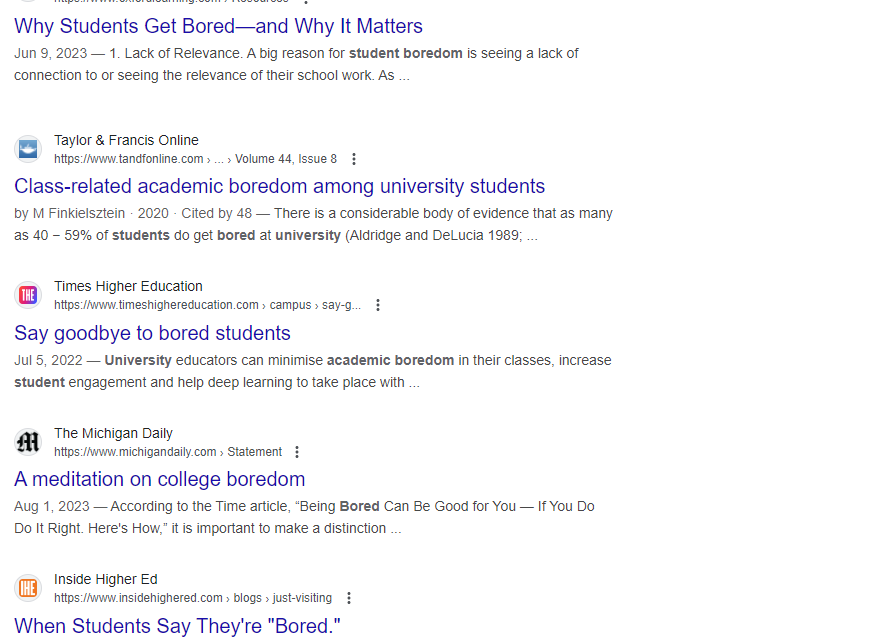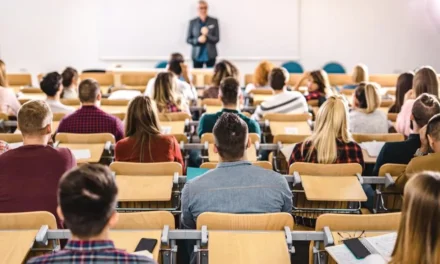Summary
Student disengagement in higher education is often driven by the perceived irrelevance of traditional classroom learning. Reports from Oxford Learning, Taylor & Francis Online, Times Higher Education, The Michigan Daily, and Inside Higher Ed emphasize that when education fails to connect with students’ real-world goals, it results in boredom and lack of engagement. Real-life learning experiences, such as project-based learning, internships, and case studies, can bridge this gap by providing tangible applications of theoretical knowledge. Higher education must evolve to make classrooms more reflective of the complexities and opportunities of the real world, ensuring that students remain engaged and prepared for their future careers.
In recent years, student disengagement in higher education has reached alarming levels. As institutions strive to prepare young minds for the future, they are confronted by a pressing issue: many students feel that their academic experience is irrelevant to their real-world goals and aspirations. Sources such as Oxford Learning, Taylor & Francis Online, Times Higher Education, The Michigan Daily, and Inside Higher Ed highlight how this perceived irrelevance contributes to growing boredom and disengagement in universities worldwide.
Traditional teaching methods—reliant on lectures, rote memorization, and theoretical concepts—often fail to capture students’ attention. When students sit through class after class without a clear understanding of how their learning applies to their lives or careers, boredom is a natural response. In an age where rapid technological change and evolving job markets are the norm, higher education must adapt by providing experiences that are directly linked to the world beyond the classroom.
Why Irrelevance Breeds Disengagement
A common thread among reports on student boredom is the notion of irrelevance. Students who are unable to see the value of what they’re learning often check out, both mentally and physically. This is not simply a problem of “lazy” students—it is a symptom of an educational approach that has not evolved fast enough to meet the needs and expectations of a new generation. Today’s students want more than theoretical knowledge; they crave real-world skills, practical applications, and tangible connections between their education and future careers.
In many cases, classrooms can feel like bubbles isolated from reality. A marketing student who never creates a campaign, an engineering student who never builds a prototype, or a business student who never works on a real-world case study is at risk of viewing their education as a series of hoops to jump through rather than an empowering journey of discovery. Without meaningful engagement, even the brightest students can become disengaged.
The Shift Toward Real-Life Learning Experiences
To combat this trend, higher education institutions must prioritize real-world learning. When students can apply theoretical concepts to tangible situations, they are more likely to engage deeply with the material and retain what they learn. Real-life experiences, such as project-based learning, internships, case studies, and industry partnerships, are powerful ways to bridge the gap between academia and reality.
- Project-Based Learning (PBL): By working on projects that mirror real-world scenarios, students gain valuable problem-solving skills. Business students might develop and pitch a marketing campaign, while engineering students design and test a prototype. This hands-on approach fosters creativity, critical thinking, and teamwork.
- Internships and Industry Collaborations: Partnering with organizations to offer internships or practical experiences enables students to gain firsthand exposure to professional environments. They can apply classroom knowledge in ways that are immediately meaningful and see the relevance of their education.
- Case Studies and Simulations: Case studies allow students to step into the shoes of real-world decision-makers, tackling complex scenarios that require strategic thinking and adaptability. Simulations provide immersive experiences that mimic industry-specific challenges.
The Need for an Evolution
Educators play a crucial role in making this transformation happen. Designing curricula that emphasize real-world applications can breathe new life into classrooms. Assessment methods should evolve beyond traditional exams and essays to focus on projects, presentations, and collaborative work that better reflect professional challenges.
Addressing the relevance gap also means listening to students and staying attuned to the realities of the modern workforce. By inviting industry professionals, alumni, and community leaders to collaborate with educational institutions, higher education can stay current and responsive to societal needs.
A Call to Action for Engaged Learning
As highlighted by insights from leading educational voices, student boredom due to irrelevance is a significant obstacle. But it is also a challenge that can be overcome through bold innovation and a commitment to real-life learning. By transforming classrooms into spaces that reflect the complexity and excitement of the real world, we empower students to connect deeply with their studies and emerge as capable, motivated leaders.


